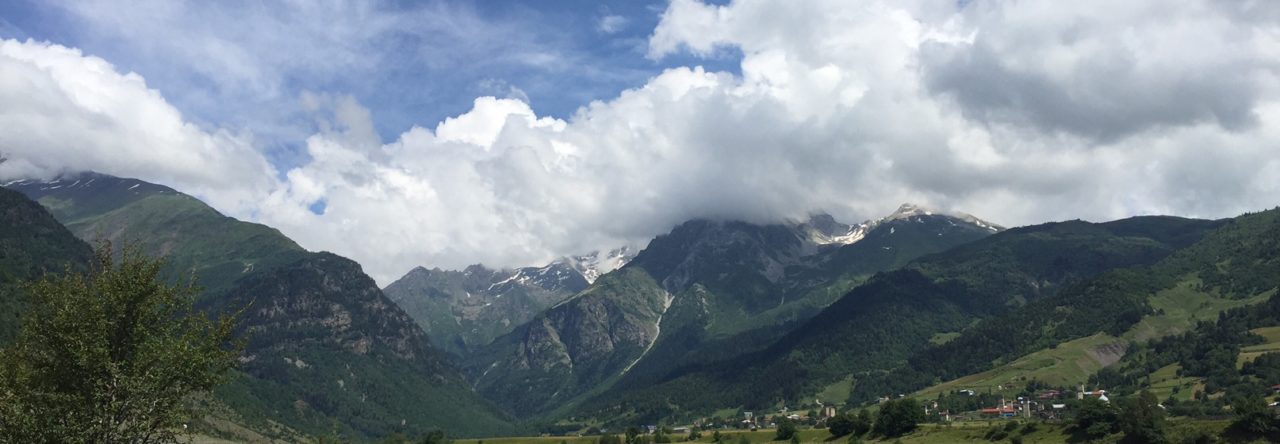
From the top of the Cascade Complex. Mount Ararat can be seen in the distance
To approach Yerevan from the north is to enter a mildly hallucinatory state. One has just passed through the exquisite foothills of the Lower Caucasus and is faced with a valley where zoning rules do not reach and where whatever can be built is being built, wherever there is room. The outskirts of the city resemble nothing so much as the pieces of a child’s model town set thrown into the air and left wherever they landed- here a McMansion that would not look out of place in the more vulgarly wealthy precincts of the US, sidled up next to corrugated tin shacks; there a primary school with a splendid view of a cement factory. Brand new Audis cut off Lada Nivas as they tear towards downtown. It is as lawless a suburban landscape as could be imagined. Looming over it all is Ararat, the spiritual symbol of the nation despite the fact that it is ruled over by a bitter enemy. The visual confusion resolves itself as one nears the outskirts of the city proper: rows upon rows of deeply stereotypical Soviet buildings, the architect’s brief calling for his usual grey, forbidding and dilapidated. Even an optimist begins to fear the worst for this town.
